Compound heterozygous (CH) variants occur when two recessive alleles are inherited and the variants are located at different loci within the same gene in a given individual. CH variants are important contributors to many different types of recessively inherited diseases. 然而, many studies overlook CH variants because identification of this type of variant requires knowing the parent of origin for each nucleotide. Using computational methods, haplotypes can be inferred using a process called “phasing,” which estimates the chromosomal origin of most nucleotides. In this paper, we used germline, phased, whole-genome sequencing (全基因组测序) data to identify CH variants across seven pediatric diseases (青少年特发性脊柱侧凸: n = 16, 先天性心脏缺陷: n = 709, disorders of sex development: n = 79, ewing sarcoma: n = 287, 成神经细胞瘤: n = 259, orofacial cleft: n = 107, and syndromic cranial dysinnervation: n = 172), available as parent-child trios in the Gabriella Miller Kids First Data Resource Center. Relatively little is understood about the genetic underpinnings of these diseases. We classified CH variants as “potentially damaging” based on minor allele frequencies (MAF), Combined Annotation Dependent Depletion scores, variant impact on transcription or translation, and gene-level frequencies in the disease group compared to a healthy population. For comparison, we also identified homozygous alternate (HA) variants, which affect both gene copies at a single locus; HA variants represent an alternative mechanism of recessive disease development and do not require phasing. Across all diseases, 2.6% of the samples had a potentially damaging CH variant and 16.2% had a potentially damaging HA variant. Of these samples with potentially damaging variants, the average number of genes per sample was 1 with a CH variant and 1.25 with a HA variant. Across all samples, 5.1 genes per disease had a CH variant, while 35.6 genes per disease had a HA variant; on average, only 4.3% of these variants affected common genes. 所以, when seeking to identify potentially damaging variants of a putatively recessive disease, CH variants should be considered as potential contributors to disease development. If CH variants are excluded from analysis, important candidate genes may be overlooked.
儿童第一数据资源中心 (“刚果民主共和国”) 由 NIH 共同基金支持的合作机构组成,奖励编号为 U2CHL138346,作为共同基金 Gabriella Miller Kids First 儿科研究计划的一部分 (“孩子第一”). 所有内容, 与 DRC 门户和网站相关的条款和条件以及政策 (“服务”) 由刚果民主共和国生产. 作者在服务中表达的观点和意见并不一定代表或反映美国国立卫生研究院的观点和意见 (“NIH”) 或美国. 政府. 此外, NIH 不认可或推广任何 DRC 实体或其任何产品或服务,也不对产品提供保证, 服务, 或刚果民主共和国提供的信息.
© 2024 加布里埃拉米勒儿童第一数据资源中心. 版权所有.






